Duration: 4 – 9 Hours
With advanced hair transplant techniques, short recovery periods, and best possible results, Iran stands out as a reliable hair transplant destination. If you’re suffering from hair loss, it’s time to feel and look your best with our all-inclusive hair transplant packages at the push of a button.
Hair Transplant Packages in Iran
* Cancellation and Refund Policy
A deposit is an advance payment to secure a spot by the user after making an informed decision and agreeing to receive a service and cannot be refunded due to the user’s refusal to receive the service or cancellation for personal reasons.
In the event of a cancellation by the patient after arrival in Iran, the following amounts will be deducted from the total payment, and the remaining balance will be refunded:
- Cancellation before the initial consultation with the surgeon: 15% of the total payment, plus incurred expenses will be deducted.
- Cancellation after the initial consultation but before hospital admission: 40% of the total payment, plus incurred expenses will be deducted.
- Cancellation after hospital admission and preparation for surgery: No refund will be issued.
Please note: If the cancellation is due to a newly diagnosed acute illness or emergency medical condition that was not disclosed by the patient on the pre-travel checklist, refunds will not be provided.
Our rhinoplasty packages have been classified into 3 levels mainly based on the surgeons' competencies and also the hospital/clinic where the surgery takes place.
Our surgeons’ ranking is measured using different criteria, including:
- Skills and hands-on experience, evaluated based on the years of experience as a surgeon, the number of successful surgeries, the percentage of patient satisfaction, and expertise in fleshy nose surgeries.
- Academic background, evaluated based on the education level (considering their specialties and subspecialties), ranking in the board certification examination, the place of study (institution ranking), and the number of congresses, workshops, and courses attended.
The higher-ranked surgeons are the Iranian brand doctors who are also active on social media.
* Note that all our doctors are board-certified and have met AriaMedTour medical group's standards.
Average Hair Transplant Cost in Different Countries
Hear about our hair transplant patients’ experiences in Iran: They have so much to share.
Watch these hair transplant stories from different patients around the world to see why people choose Iran for their cosmetic surgeries and how AriaMedTour facilitates their medical trip to Iran.
A medical trip documentary:
Crossing borders for a unique beauty adventure
Choosing Iran for hair transplant:
A Swiss patient’s decision and experience
Hair transplant in Iran: A German’s journey
and impression during the pandemic
Brazilian patient’s journey to hair
restoration in Iran with AriaMedTour
Dual transformation: Norwegian
patient’s hair and beard transplant in Iran
Iran’s allure: German patient’s hair transplant
adventure and love for the country
Great doctors and low prices got Azerbaijani
man to Iran for a successful hair transplant
Seven days in Iran: Afghan patient’s hair
transplant experience and advice
An Omani couple’s cosmetic adventure
in Iran: Hair transplant and more
Our hair transplant patient from India highly
recommends Iran for cosmetic procedures
Before & After Photos
Take a look at ‘before and after’ photos of people who got their hair transplant done in Iran.
All inclusive Hair Transplant Packages in Iran
| Procedures | Price (USD) |
| (FUE/FIT) Method 1000 hair strands Follicular Isolation Technique (FIT) is ideal for patients that wish to keep a very short hair cut, or for those who desire a less invasive alternative to strip harvesting |
$690 |
| (FUE/FIT) Method 2000 hair strands Follicular Isolation Technique (FIT) is ideal for patients that wish to keep a very short hair cut, or for those who desire a less invasive alternative to strip harvesting |
$740 |
| (FUE/FIT) Method 3000 hair strands Follicular Isolation Technique (FIT) is ideal for patients that wish to keep a very short hair cut, or for those who desire a less invasive alternative to strip harvesting |
$790 |
| (FUE/FIT) Method 4000 hair strands Follicular Isolation Technique (FIT) is ideal for patients that wish to keep a very short hair cut, or for those who desire a less invasive alternative to strip harvesting |
$890 |
| (FUE 2000 hair strands + FUT) Method Firstly, Follicular unit transplantation (FUT) is a hair restoration technique, also known as the strip procedure, where a patient’s hair is transplanted in naturally occurring groups of 1 to 4 hairs, called follicular units. … In recent history, FUT had been the most common procedure for hair restoration. Secondly, the FUE will be applied. |
$910 |
| (FUE 3000 hair strands + FUT) Method Firstly, Follicular unit transplantation (FUT) is a hair restoration technique, also known as the strip procedure, where a patient’s hair is transplanted in naturally occurring groups of 1 to 4 hairs, called follicular units. … In recent history, FUT had been the most common procedure for hair restoration. Secondly, the FUE will be applied. |
$990 |
| (FUE 4000 hair strands + FUT) Method Firstly, Follicular unit transplantation (FUT) is a hair restoration technique, also known as the strip procedure, where a patient’s hair is transplanted in naturally occurring groups of 1 to 4 hairs, called follicular units. … In recent history, FUT had been the most common procedure for hair restoration. Secondly, the FUE will be applied. |
$1090 |
Hair Transplant Prices
| Procedures | Price (USD) |
| (FUE/FIT) Method 1000 hair strands | from $690 |
| (FUE/FIT) Method 2000 hair strands |
from $740 |
| (FUE/FIT) Method 3000 hair strands | from $790 |
| (FUE/FIT) Method 4000 hair strands | from $890 |
| (FUE 2000 hair strands + FUT) Method | from $910 |
| (FUE 3000 hair strands + FUT) Method | from $990 |
| (FUE 4000 hair strands + FUT) Method | from $1090 |
What We Offer
- Hair Transplant Procedure
Clinic and doctor visits, medical tests, hair transplant procedure in clinic, , post-operative care, medicines*, recovery, and follow-up - T-Visa Authorization Code
T-visa authorization code. (Note that there is a separate visa fee that the patient must pay when receiving the visa, which it is not part of this package).
- Pick-up & Transfer
Airport pick-up, private transfer from hotel to clinic/hospital and vice versa - Accommodations
3 nights stay in a three-star to five-star hotel offered which is preferably near the clinic (At the patient's expense) - Other Services
24-hour on-call assistance, interpreter, SIM card and internet
Note: *The medicines and other aftercare items included in this package are the necessary items prescribed by the doctor.
Also, the clinics and/or hotels which are included in the package are offered by AriaMedTour to the patient. There may be other clinics and/or hotels which the patients may consider and the price might be different.
After the procedure it is needed to use 3 to 6 months some medications and shampoo which are prescribed by the doctor and it is the patient responsibility to take care of them.
It is crucial to obey the instructions given by the clinic to take care of your hair. These include the way you sleep as well as washing the hair with shampoo with the detailed instructions. Avoiding the instructions just as said above might result in defects which are the patient's responsibility.
The appropriate method for your case will be diagnosed and offered by the doctor based on the visit in person and the parameters such as thickness of the hair strands.
The first visit will be with the doctor and the hair transplant procedure will be done by the operator under the doctor supervision. Based on a new policy of the Ministry of Foreign Affairs, the citizens of the USA, UK, and Canada are included in different logistic services.
Your detailed schedule after arrival in Iran
>> Day 1: Arrival at airport: you will be welcomed by our guide, then picked up and transferred to hotel*. Checking into hotel; Transfer from hotel to clinic; Visiting the doctor; Pre-op tests; Transfer from clinic to hotel
>> Day 2: Transfer from hotel to clinic; Preparations for procedure; Conversation between doctor & patient, reviewing the expectations; Performing of procedure; Taking doctor’s instructions; Hair transplant area is bandaged if needed; Transfer to hotel.
>> Day 3: Transfer to clinic for bandage removal; Transfer from clinic to hotel; Having some rest at the hotel.
>> Day 4: Transfer from hotel to AriaMedTour’s office; AriaMedTour gives patient special gift**; Start of permanent follow-up through communication channels.
>> Note:
* Transfer from the airport to the hotel will be with the taxi.
** In some cases where your departure is in the weekends this step may not be feasible.
About our hotels
We work with a select group of three- to five-star hotels in Tehran and other cities. Depending on the type of package you choose and the location of the hospital or clinic where you are going to receive the treatment, we arrange the most suitable hotel for you. The name, details, and photos of the hotel will be sent to you ahead of time.
Why Iran?
Hair transplant is much in demand in Iran and this has enabled Iranian hair transplant surgeons to build on their experience and expertise in this procedure. Also, the highly affordable hair costs of hair transplant and other costs in Iran is a great reason to opt for the country instead of other destinations.
Why AriaMedTour?
Arranging a hair transplant abroad will cause you some inconvenience, such as getting a visa, arranging for a hotel, city transfer, language barrier, and more. We at AriaMedTour will eliminate all this hassle.
How much does it cost to have a hair transplant in Iran?
Like all other healthcare services, hair transplant is offered at rock-bottom prices compared to other countries. With less than $1000, you can have a full hair transplant at a modern clinic by a highly experienced doctor. For an all-inclusive hair transplant package that includes everything you need, including five-star hotel accommodations for 3 days, you would pay only $1290.
Haven’t decided yet? Let us help you, it’s free
Hair transplant in Iran: all you need to know
No one can deny the inseparable relation between hair, beauty, and self-confidence. Your hair may start to fall for a variety of reasons as you get older, impacting your beauty and, in turn, your self-confidence. So, if you’re looking for an affordable solution to your hair loss, here is a clear-cut path to getting your hair back again! And that’s hair transplant in Iran.
What is hair transplant?
Hair transplant or hair restoration surgery is an effective treatment for alopecia (the problem of hair loss). It involves two parts:
- Removing hair-bearing tissues or hair grafts from one part of the scalp (donor zone)
- Relocating them to another part (recipient zone)
Donor zone refers to the area of the scalp, usually the back of the scalp, that has more hair with higher sustainability. Recipient zone refers to the balding part of the scalp that needs to grow hair. Hair loss or receding hairline mainly results from pattern baldness. Other factors like diet, stress, hormone, and disease contribute little to the hair loss.
Why is Iran a good destination for hair transplant?
Hair transplant surgery is a common cosmetic procedure in Iran. With highly-experienced surgeons and modern hair transplant clinics, Iran offers foreign candidates a very safe experience of hair transplant.
The low cost of hair transplant in Iran serves as another motive, enticing candidates from all over the world to choose Iran as their destination. As is the case with lots of other cosmetic surgeries, the cost of hair transplant in Iran compared to other countries is considerably more reasonable.
Plus, the results of hair restoration surgery in Iran are reported to bring a very high level of safety and satisfaction for patients. A study on the success rate of hair transplant in Iran indicates that this surgery offers a high rate of success with the least possible side effects. The study reveals that the satisfaction level of the transplanted hairline in 60% of patients was excellent and in 40% was good. So, it would be fair if we claim that Iran is a highly successful country in providing quality hair transplant services.
Hair transplant surgeons in Iran
Just like other cosmetic/medical procedures, Iran’s becoming a household name in hair transplant. The country embraces a society of highly-skilled and board-certified surgeons in this field. Having graduated from top-rated universities, Iranian surgeons have completed their fellowships in hair transplant in Europe and the United States.
Studies show that in Iran three out of five men go bald before the age of 50. Accordingly, the number of candidates and those who undergo this surgery is on the rise. The more procedures surgeons perform, the better their surgery results are. As a result, this has brought more proficiency for Iranian surgeons in this field. These surgeons are, hence, able to anticipate all the complications that may arise before the surgery. And, this would guarantee the patient’s treatment success.
Hair transplant cost in Iran
The cost of a hair transplant in Iran is one of the lowest, if not the lowest, in the world among countries offering high-quality procedures as well as other medical tourism services. A hair transplant costs from $1200 to $2500 in Iran, including all the related fees such as doctor’s visit, anesthesia, surgery fee, and the rest. However, the same procedure in the United States and Europe costs much higher, from $4,000 to $16,000.
Iran beats other Asian countries like Turkey, India, and Thailand in terms of price, as it offers more affordable prices in hair restoration surgery. A hair replacement operation in Turkey costs around $3,000, and the same procedure costs around $3,000 in India and Thailand.
How is hair transplant performed in Iran?
Hair transplant in Iran is more advanced than ever, and surgeons do their best to help you get through it easily. Iranian hair transplant surgeons adopt the latest methods and technologies to help you get through it easily. The surgery is performed in a modern clinic under local anesthesia. The procedure takes about 8 hours, while the healing process takes at most 3-4 days. The first hints of your treatment would be visible after around 4 months, while the full results would be apparent after 8-12 months.
Moreover, Iran is a country offering all the techniques of hair loss treatment available in the world. There are four main techniques for performing this surgery. They include Follicular Isolation Technique (FIT), Follicular Unit Extraction (FUE), Follicular Unit Transplantation (FUT) also known as FUSS, and a combination of FIT and FUT. The latter is used in patients with extensive baldness, as in this method, more grafts are implanted on the scalp compared to other techniques. Read more about hair transplant techniques.
Hair transplant recovery: what to expect?
After your hair transplantation procedure is finished, you can go home right away. In general, you need to stay around 2 to 3 days in Iran to get your procedure done and be ready to leave the country.
In the first few days after the surgery, your scalp may be sore and tender. You can take pain medications according to your doctor’s instructions. You may also experience numbness and swelling in the treated area, which will disappear in a matter of days.
You will wear a bandage on the transplantation site for about 3 days. After that, you can have it removed while noticing that the side effects are going away.
After around 3 to 5 days, you’re ready to resume your work and you can go back to exercising within 2 weeks.
Tips to follow after hair transplant
At AriaMedTour, we’ve been able to provide our hair transplant patients with the utmost care and effective treatment. Our services not only include pre-op attention, but also will help you have a short and hassle-free recovery. However, here we provide with some of the most important tips you should consider during your recovery:
- Rest for a day after your hair restoration procedure.
- For 3 nights, sleep with your head elevated and do not let it rub against your pillow.
- Do not take aspirin or any other medications without your doctor’s approval.
- For 2 weeks, do not expose your head to any dirt or bacteria.
- Wash your head after 3 days, but remember that you should be gentle with the treated areas.
- Stay away from alcohol and smoking before and after the surgery, as they may negatively affect your healing.
Hair transplant for women
Unlike what is expected by most people, women are, of course, candidates for hair transplant. According to the American Association of Dermatologists, hair loss for women is common. Women usually deal with two types of hair loss. One is receded hairline and the other is female pattern baldness. The former occurs in both men and women and can be treated with hairline lowering. In this case, the surgeon transplants hair from hair bank to the front of patients’ hair.
When hair loss pattern is not distinct and there’s a thinning/balding in all areas of the head, it may be due to female pattern baldness. A hair transplant may not always be appropriate for women, and other methods like Platelet Rich Plasma (PRP) and mesotherapy will do a far better job. PRP involves injecting rich platelets into the recipient area, after centrifuging the patient’s own blood for about 10 minutes. This stimulates hair follicles, thickens thin hair, increases hair volume, and promotes new hair growth. Mesotherapy is another method which triggers hair growth through injecting nutrients’ boosters into the scalp.
Facial hair transplant in Iran (beard transplant)
Today, there is a significant increase in the number of men who choose a beard or mustache transplant. They seek beard or mustache transplant to restore hair in areas of the face with no or thin hair. Facial hair transplant procedure is similar to a regular hair restoration surgery. Both FUT and FUE techniques can be applied in beard or mustache transplant. The procedure requires great preciseness because hair grafts need to be transplanted with the right growth direction so that the results look more natural and less artificial. To learn more about this procedure, go to beard transplant in Iran (facial hair transplant).
Eyebrow transplant in Iran
Natural eyebrows are one of the most prominent elements of facial beauty. Many choose to have eyebrow transplant, or eyebrow hair restoration, to have natural-looking and permanent eyebrows. People seek eyebrow transplant for many reasons, including their eyebrows being over-plucked, burned, or affected by scarring or genetics.
Eyebrow transplantation is widely performed in Iran using both FIT and FUT methods. The donor hair can be harvested from any area on the body. But in most cases, it is taken from the head. The surgery is done under local anesthesia, and there is no scar left after the surgery. The recovery after eyebrow restoration surgery is fast, and the result is permanent.
Every year, a great number of people choose to undergo an eyebrow transplant in Iran. Affordability, top-rated clinics, and expert specialists are some of the main factors that come to play when considering why eyebrow transplant in Iran is gaining popularity.
Iranian specialists employ the latest medical techniques and adopt artistic approaches when performing the delicate procedure of eyebrow transplant. To maintain their competition, Iranian eyebrow transplant clinics are also fully equipped with the most recent technologies used in developed countries.
Eyebrow transplant cost in Iran
Eyebrow transplant cost in Iran starts from $800, which is by far lower than other countries in the region like Turkey or India. The affordable cost, however, does not affect the quality of the treatment. With thousands of eyebrow transplant procedures performed in Iran each year, Iranian specialists are highly experienced in this area. They take your expectations into consideration and use their experience as a tool to shape your eyebrows like an artist.
In order to achieve the best outcome for your eyebrow transplant, you only need to direct all your attention to the procedure itself. By knowing that your trip is thoroughly planned by our team, you will have greater peace of mind about your medical tourism journey. Contact us to get a free consultation and learn more about our hair transplantation services.
Frequently Asked Questions About Hair Transplant
Is transplanted hair permanent?
The results of hair replacement surgery are permanent as the replaced hair is taken from an area which is resistant to balding. However, you should bear in your mind that, just like any other trait subject to aging, your hair may change over time. For example, your transplanted hair will be gray as the time goes by, but usually slower than your original hair.
Is hair transplant safe?
Considered as a safe and effective procedure, hair transplantation promises natural, enduring, and permanent results. According to the Aesthetic Surgery Journal, the surgery is reported with a very high level of patient safety, and the incidence of surgical complications is estimated to be less than 2% to 3%. With all being said, the key to a safe and successful surgery is choosing the right surgeon for the operation.
Is hair transplant worth it?
Hair transplant is a procedure with countless advantages and several side effects. As most people prefer to know what they are to expect after the surgery, we’re writing this to help you overcome this concern.
Hair restoration surgery brings back what it feels like to have a head fully covered with hair. So, reviving the missing parts of your self-image would be the very first advantage of this treatment. The surgery is an ultimate solution to hair loss and rarely needs to be repeated as the results are permanent. Plus, this treatment is more cost-effective than other alternatives as it is a one-time procedure and there is no need for repeating the process, consuming any medications, or sticking to specific maintenance.
There are some side effects that may occur after the surgery. They include bleeding, swelling, inflammation, infection, itching, and sudden loss of new hair. These side effects are not permanent, nor do they last for a long time. In most cases, none of them are observed or if observed, they can be handled with medications.
Is hair transplant painful?
One of the frequently asked questions by many people seeking a hair replacement surgery is whether it’s painful during the operation or recovery process. The answer is that you will experience no pain during the operation as the surgeon applies local anesthesia. However, your scalp may be sore for a few days after the surgery. Depending on the patient’s condition, it may involve different levels of pain and discomfort. In case of severe pain, the doctor will prescribe some painkillers.
Check out the complete list of questions about Hair Transplant
Contact Us Via Whatsapp
Feel free to express your opinions or ask your questions.

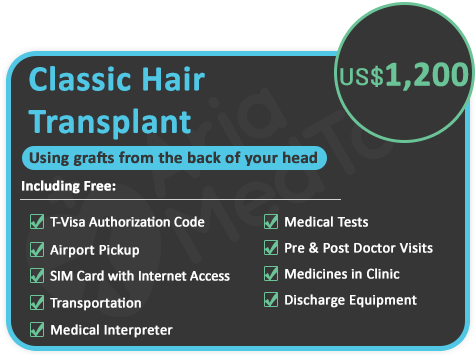
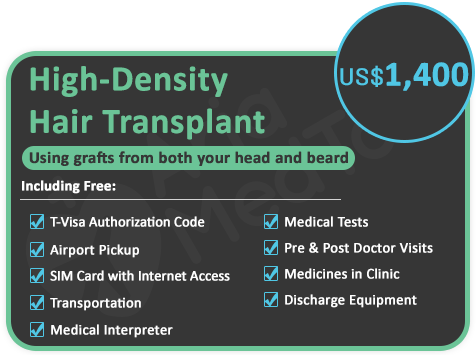


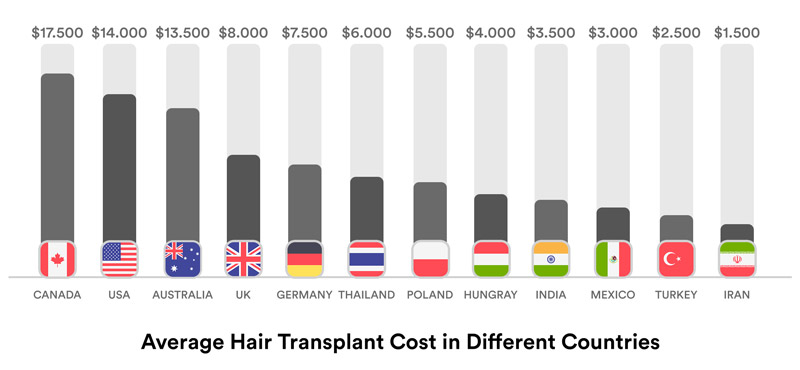
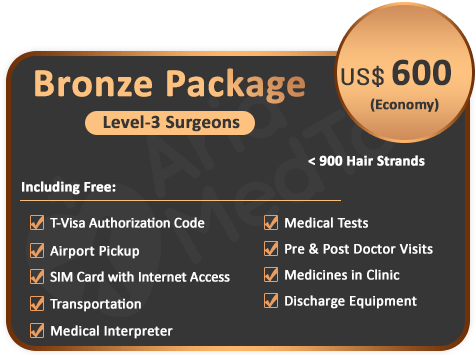


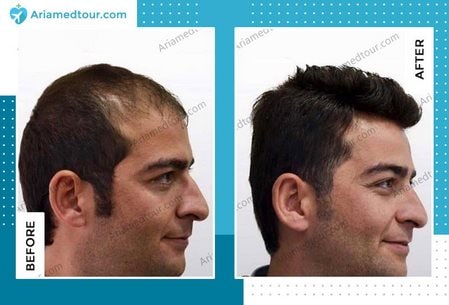
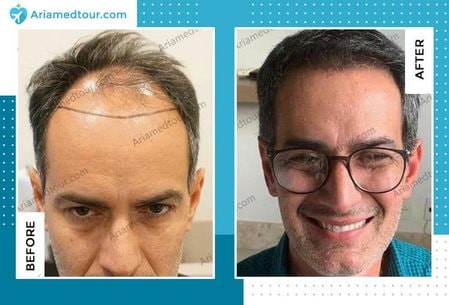
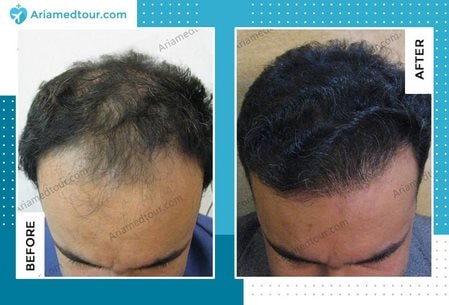
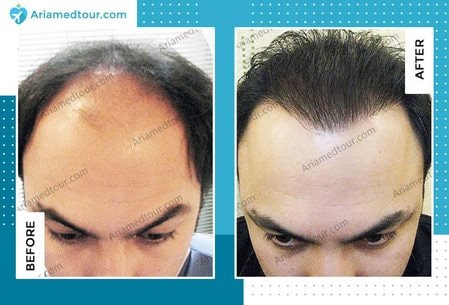
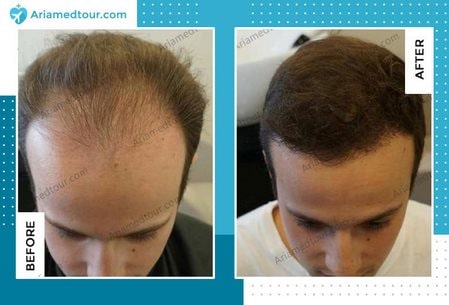
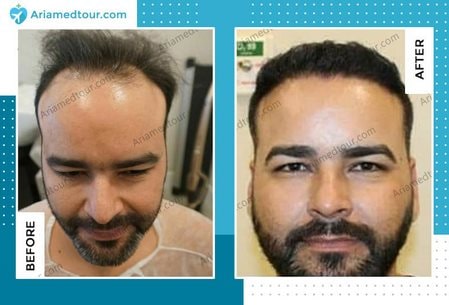

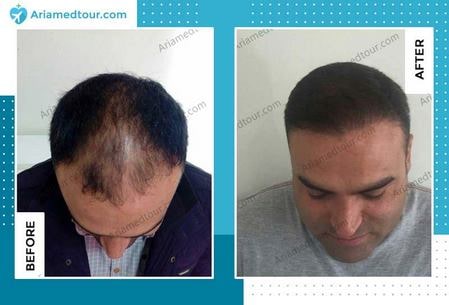

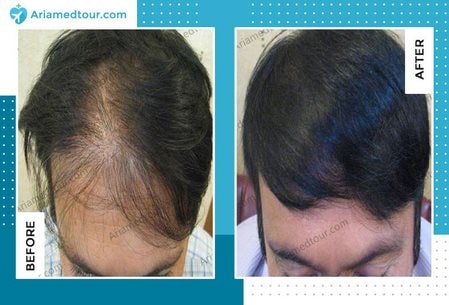

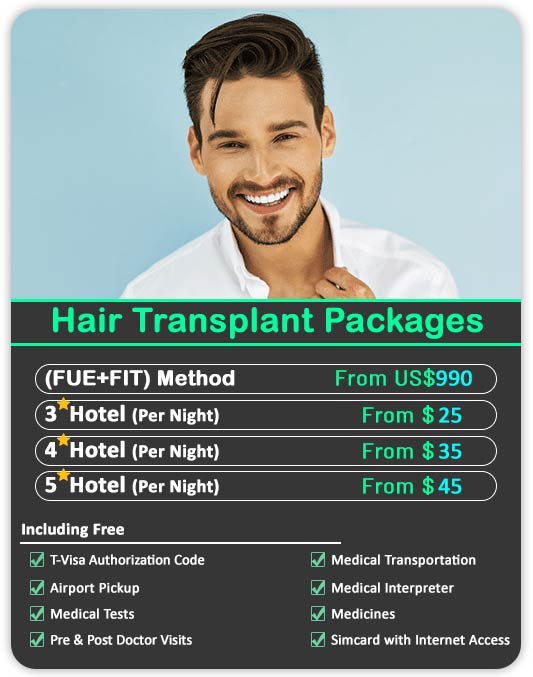
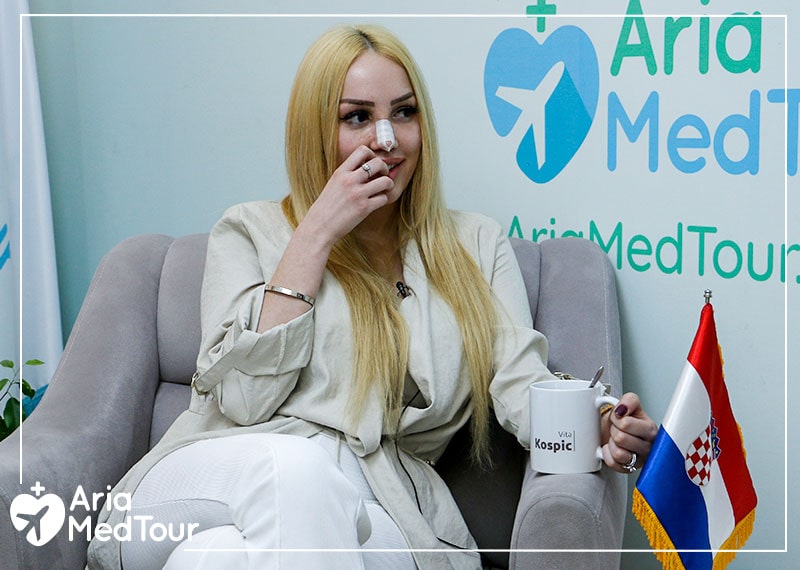
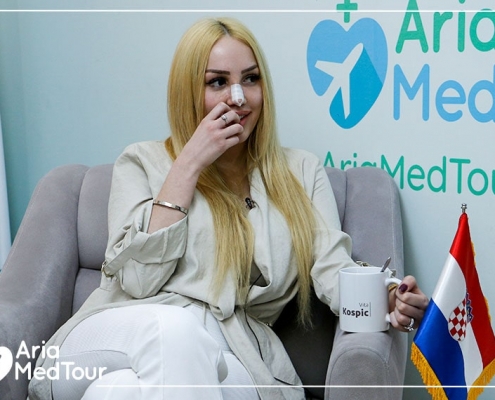
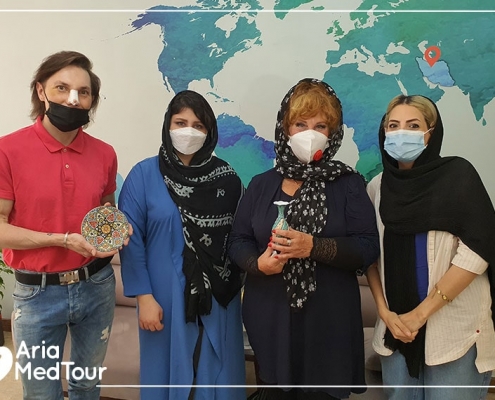
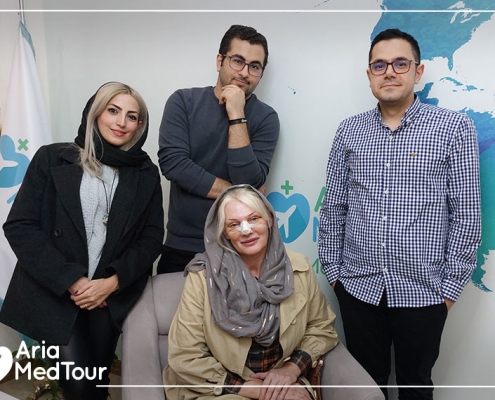
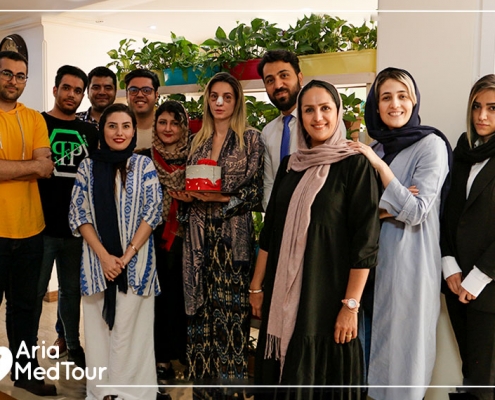
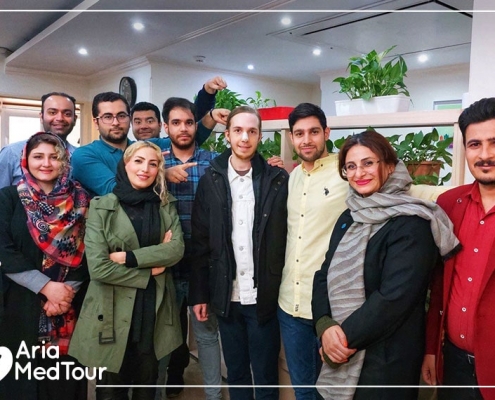
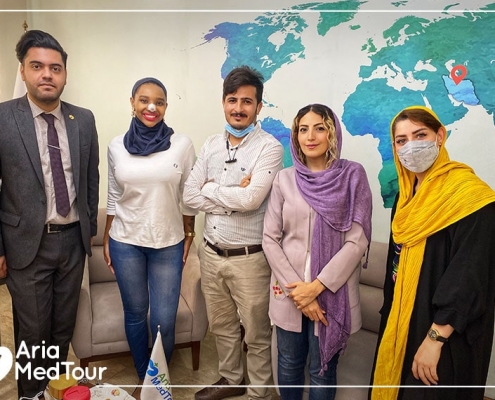

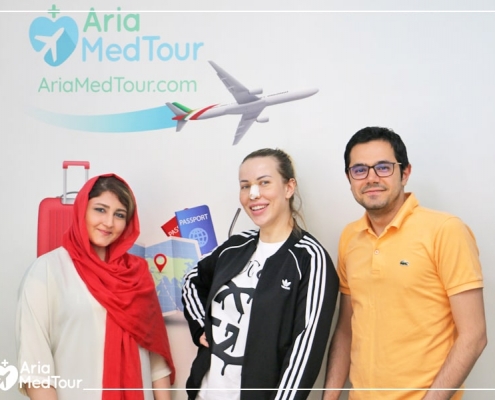
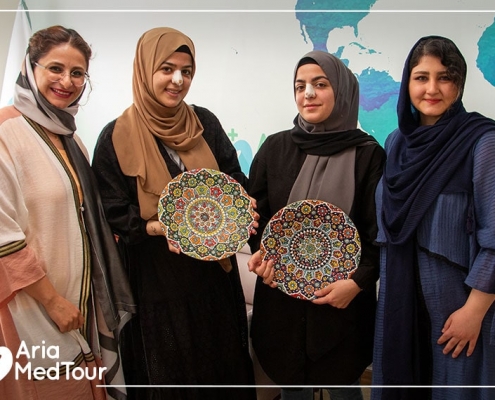
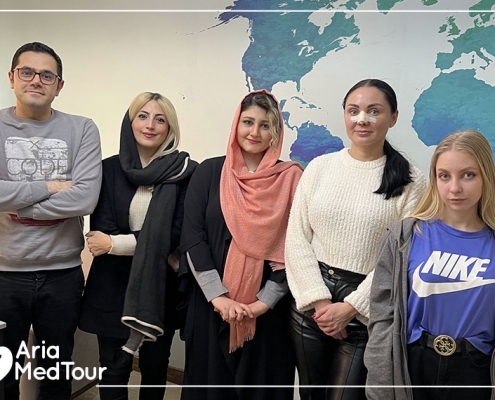
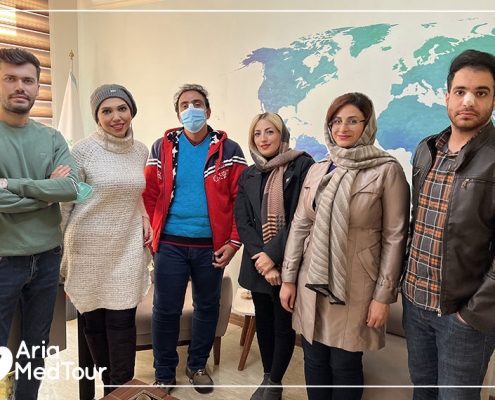
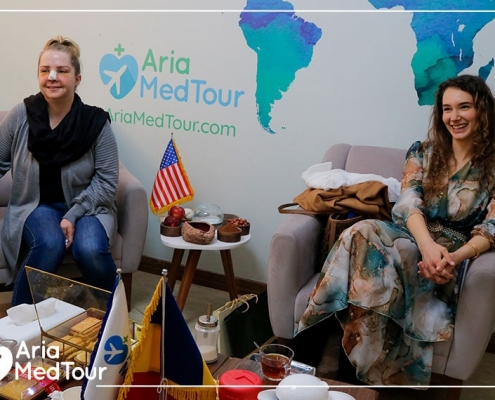
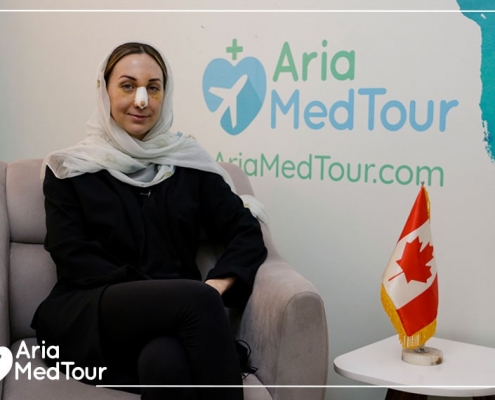
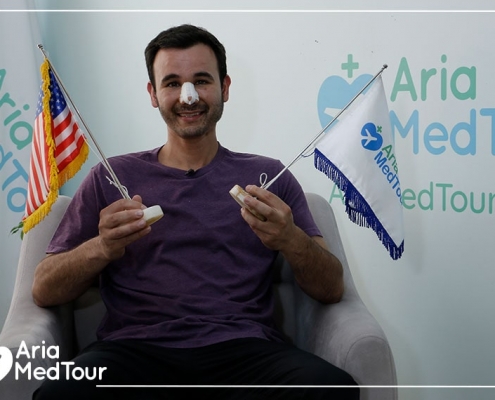

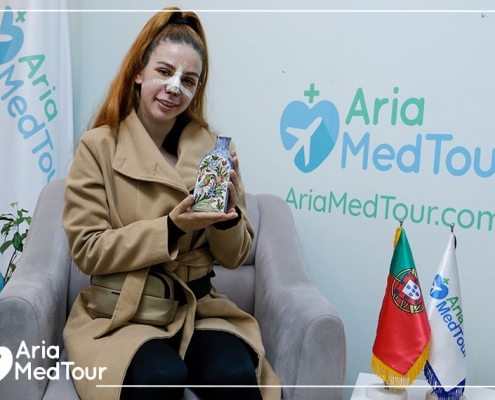
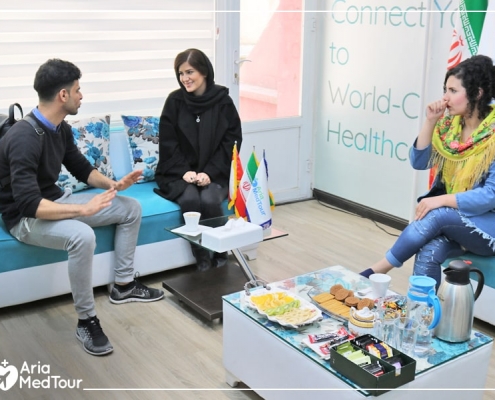
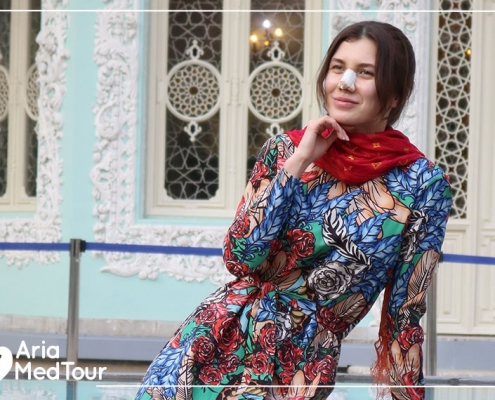
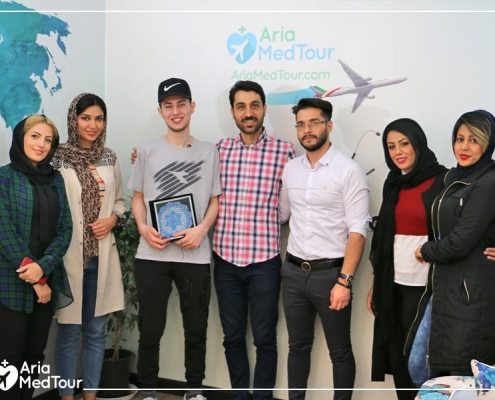
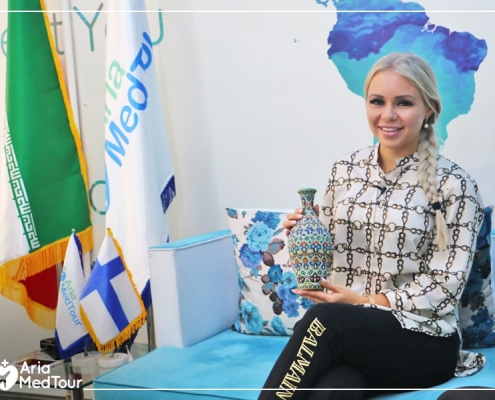

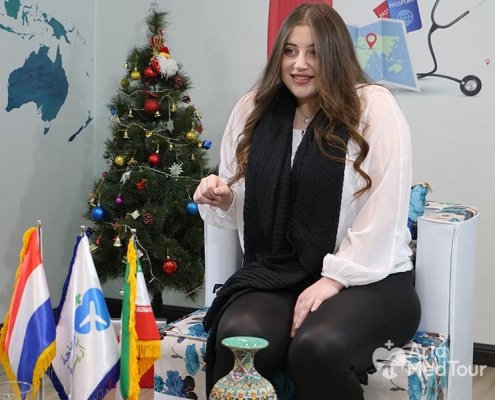



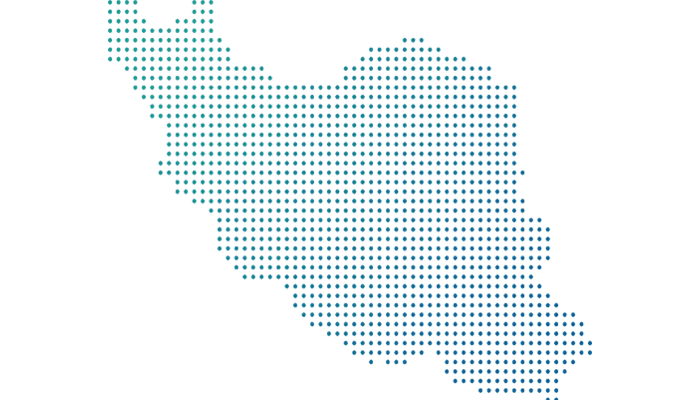

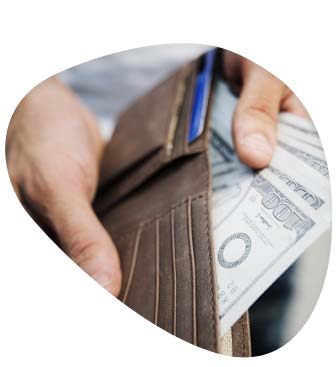

I think I just pulled out some grafts as I was washing my hair last night. I was too cautious not to be rough on my head, just rubbed very gently exactly as my surgeon instructed, no scratching, no pressure, no pulling, no nothing. But I noticed some scabs falling out and they seemed to be containing hair grafts. I had a hair transplant of 3500 grafts last week and it cost me a fortune. Now I’m afraid I might have lost a great number. I mean, I couldn’t count of course, but if I lose some every time I have to wash my hair, it will be a lot. By the way, my head is still kind of red and full of scabs. I thought it would heal in a week. Is it normal? Please answer. Thanks.
Dear Jake, I totally understand your concern and it’s ok to be worried about a procedure result you invested so much hope and money in. But, please don’t panic. What you mentioned seems normal after a hair transplant. There’s no need to worry. First of all, you should know that hair transplants are not usually 100% efficient, meaning that not all grafts survive. The surviving follicles which could be about 90%-95% in successful hair transplantation with good post-op care, are usually embedded into the scalp by day 5 and are unlikely to be detached following a gentle wash on day 7. Those grafts that haven’t survived are supposed to fall out with the scabs in the first 2 weeks, mainly on days 8 to 10. And it’s pretty normal if you notice some hair-containing scabs falling after washing your hair. In other words, they were meant to be shed anyway. Having scabs on your head is also normal and as I mentioned they will be gone a few days after washing. So is the redness. It’s normal and it can take 2 to 4 weeks for the redness to completely vanish.
If your concerns persist, I recommend you contact your doctor to discuss your worries and review the recovery procedure.
But another thing that may be worth mentioning here, as you seem to be worried about your procedure results; you’re not going to see any results until at least 3 months after the procedure. This is when the regrowth starts and it can take up to a year or more to see the final result.
Hi, I’m 34 years old with a male pattern baldness. My doctor told me that my hair bank is not strong enough to fully cover the baldness and that I can have a hair transplant with a weak density, only to improve the frontal area a bit. I was thinking if I could have somebody else’s hair donated to me to have a better procedure which is worth doing. Is it even possible? And would you recommend it?
Thank you for your question. It was actually an intriguing question. The procedure is theoretically possible. However, just like organ transplantation in which the donor of the organ/tissue is somebody else, there is a high risk of rejection as the body perceives the transplanted follicles as foreign bodies and starts to fight them. To avoid rejection in an organ transplant, as well as essential tests the donor must take, the recipient must also take immunosuppressants which can come with serious side effects. The rewards of a vital organ transplant will pretty much outweigh the complications, in many cases there is no other choice. However, the complications of using immunosuppressants for aesthetic purposes are not worth the risks which is why the procedure is only performed using the patient’s own follicles. Yet, it could be done if you happen to have an identical twin who is willing to donate hair grafts or in case you’re already taking immunosuppressants for some other reason.
Is it Ok if I remove the scabs on day 8? It’s difficult to resist. The scabs are already falling off naturally and as I heard they’re all gonna fall off soon. I’m quite tempted to remove them all at once.
The scabs indeed fall off naturally, mainly on days 8 to 10. And they’re often completely gone by the second week. Yet, it’s better to be patient and avoid removing them yourself. Since there’s a good chance that you cause trauma and complicate your recovery by pulling out and scratching. However, you are allowed to wash your head as your doctor has instructed and it will help a lot with shedding scabs. Just a little patience and you’ll be scab-free in a few days.
I’m 28 years old with a male pattern baldness and am considering a hair transplant. But I wanna make sure if it is a permanent solution. I’m wondering if one single surgery could give me a desirable result so that my head will look like what it used to be when I was younger. Or am I gonna lose hair again and have to undergo hair transplants regularly? I would really appreciate an honest answer as I’m not willing to go through several procedures every few years. Is there any permanent solution?
Thank you for your question. The answer to the first part of your question is a YES. A hair transplant is considered a permanent solution whose results can even last a lifetime. The transplanted hairs are genetically resistant to hair loss and won’t be affected. However, you should notice that male pattern baldness is a progressive condition and you may continue losing hair over time. It means that hair loss can still happen in the neighboring area, however, not to the transplanted hairs but to the non-transplanted ones originally belonging to the affected area. The speed and level of progression are not completely predictable. Therefore, having a full head of hair through one surgical session is not something a surgeon can guarantee for a lifetime. And there is a chance you’ll need one or more hair transplants in the future to maintain the desired result.
Yet, there are factors to consider for a better result and to reduce the chance of a need for a revision hair transplant. Timing and the stage of baldness in which you decide to have a hair transplant matters a lot. Hair transplant surgeons recommend waiting until hair loss almost stops and is not in the progressive stage, usually from stage 4 (Male pattern baldness has several stages and the level of progression may vary from one patient to another. You did not mention which stage of baldness you’re experiencing and it won’t be possible to diagnose without an in-person consultation or seeing your photos.). Other treatments such as topical or oral medications, PRP, and laser therapy are often recommended to be done in combination with a hair transplant to help maintain the existing hairs and slow down the hair thinning and hair loss progression.
Most hair loss treatments are temporary, meaning they’re only effective as you keep taking them and require regular use. A hair transplant is the only permanent solution.
I’m a healthy 34-year-old man. I’ve been considering a hair transplant to improve my receding hairline. The thing is that I do regular workouts and it’s very important to me not to be away from training for long. I want to know when can I work out after having a hair transplant. Thank you so much.
Your commitment to doing workouts is commendable. You can do exercise two weeks after your procedure. However, you’d better stay away from strenuous activities like weightlifting or anything imposing stretch on your incisions and causing pain or soreness for about a month. Swimming could also be practiced after one month. Combat sports and martial arts, however, should be avoided for 3 to 4 months after surgery. So you can start by doing light exercises and increase the intensity gradually if necessary. I hope it helped and wish you a smooth and successful surgery.